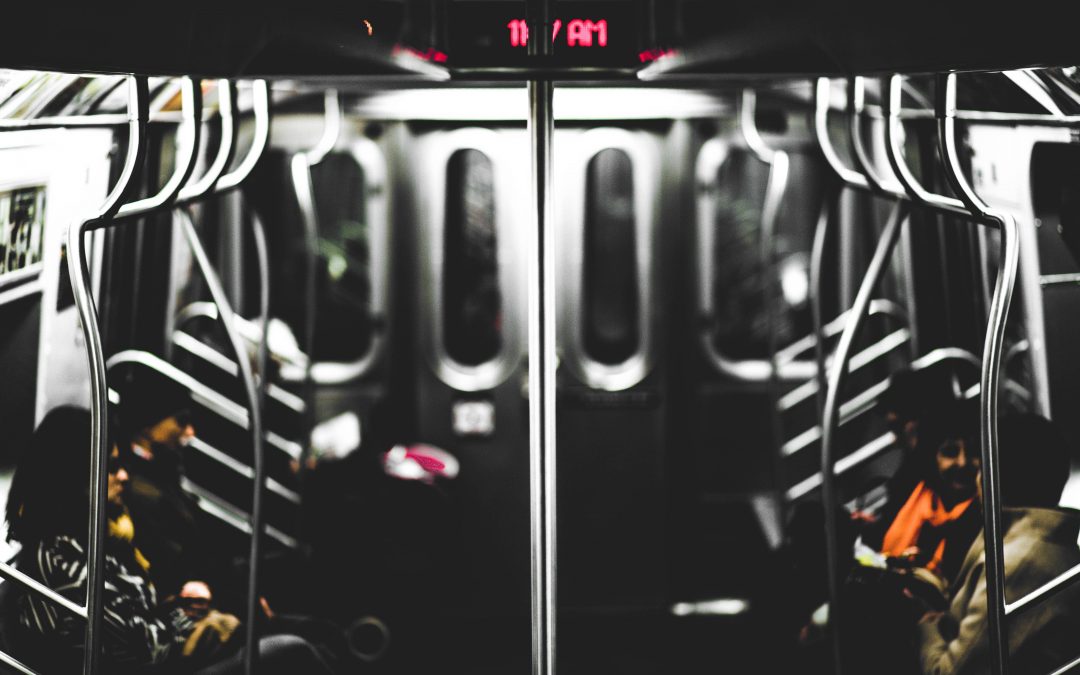A lesser-known holiday tradition for New York’s Metropolitan Transit Authority (MTA) is to put vintage subway cars–usually on display at the New York Transit Museum–back in service, but for a limited time only. The “Shoppers Special” operates annually on Sundays between Thanksgiving and Christmas, departing several times a day from the 2nd Ave. station and making local stops along the 6th Ave F/M line to Queens Plaza.
This special 8-car train consists of R1/9 “City Cars” that ferried passengers throughout the city from 1930 to 1970, along unrecognizable lines like the AA, BB, CC, EE, and H. As the MTA puts it, “The jazz composer Billy Strayhorn would have taken a City Car to Sugar Hill when Duke Ellington told him to ‘Take the A Train.’”
This special subway ride will transport you in more ways than one: the train cars are decorated with era-appropriate ads, as documented here by Business Insider. And the cars themselves are a nostalgia trip, with “rattan seats, ceiling fans, incandescent bulb lighting, drop-sash style windows, and roll signs” (MTA). Swinging metal hanging “straps” help brace standing riders: the swinging lets you sway more with the motion of the train than the parallel grab bars in their modern counterparts. The light bulbs overhead consistently flicker off–for one thrilling moment–between stations. The antiquated emergency brakes, relatively low ceiling fans, and insistently closing doors all mark a charming but less foolproof era.
To ensure subway riders don’t play a game of chicken with the subway doors–as current cars allow and present-day commuters routinely test–MTA operators are stationed in every car of the Shoppers Special. The ceiling fans and air vents provide excellent ventilation and a whoosh feeling of truly traveling that is missing from the current enclosed subway cars. That may be in part because the doors between cars are left open on the Shoppers Special, to encourage riders to cross over and continue their journey between eras.
While most of the train cars are from the 1930s and 1940s, one car looks noticeably different: because it was designed to look noticeably different. Car No. 1575 looks more contemporary because it was a prototype, meant to replace the older cars that compose the rest of the throwback train. It’s still a noticeable departure from the current subway car, however.
Commissioned for the Independent Subway System (IND) and operating for over 40 years, the R1/9 cars that comprise ⅞ of the Shoppers Special are the basis for the current subway car R160 model, and even the upcoming R211 cars. The durability of the R1/9 model cars is evident in their long run, and in the smooth ride enjoyed by modern straphangers: a mixed bag comprised of surprised New Yorkers, New Yorkers in the know (some even dressed for the occasion in period wear), tourists, and many delighted children.
The popularity of this yearly tradition demonstrates the public’s avid interest in an older New York, documented by projects like the Tenement Museum. The New York Transit Museum gives a good glimpse of what commuting might have looked like in the early or mid-20th century. This photo tour by Business Insider serves as a quick introduction. Articles by Smithsonian and Untapped Cities describe additional hidden wonders and subway secrets:
- abandoned subway stations/platforms/levels
- the underwater graves of subway cars
- a long-running subway beauty pageant
- a pneumatic subway car that stretched one city block
- armored Money Trains that carried subway fare money to a secret room in Brooklyn for counting
- a fake Brooklyn townhouse that functions as a ventilation shaft and emergency subway exit
- the Signal Learning Center at 14th Street station
- a small, subway-accessible NYPL branch
- the entrance to the historic Knickerbocker Hotel in Times Square station
- the Masstransiscope art installation at the abandoned Myrtle Ave subway station
- a bedecked private subway car–every commuter’s fever dream
Interest in such an integral New York institution will never abate. So the next time you’re riding the subway, consider that your car may host a nostalgia ride 50 years from now…

